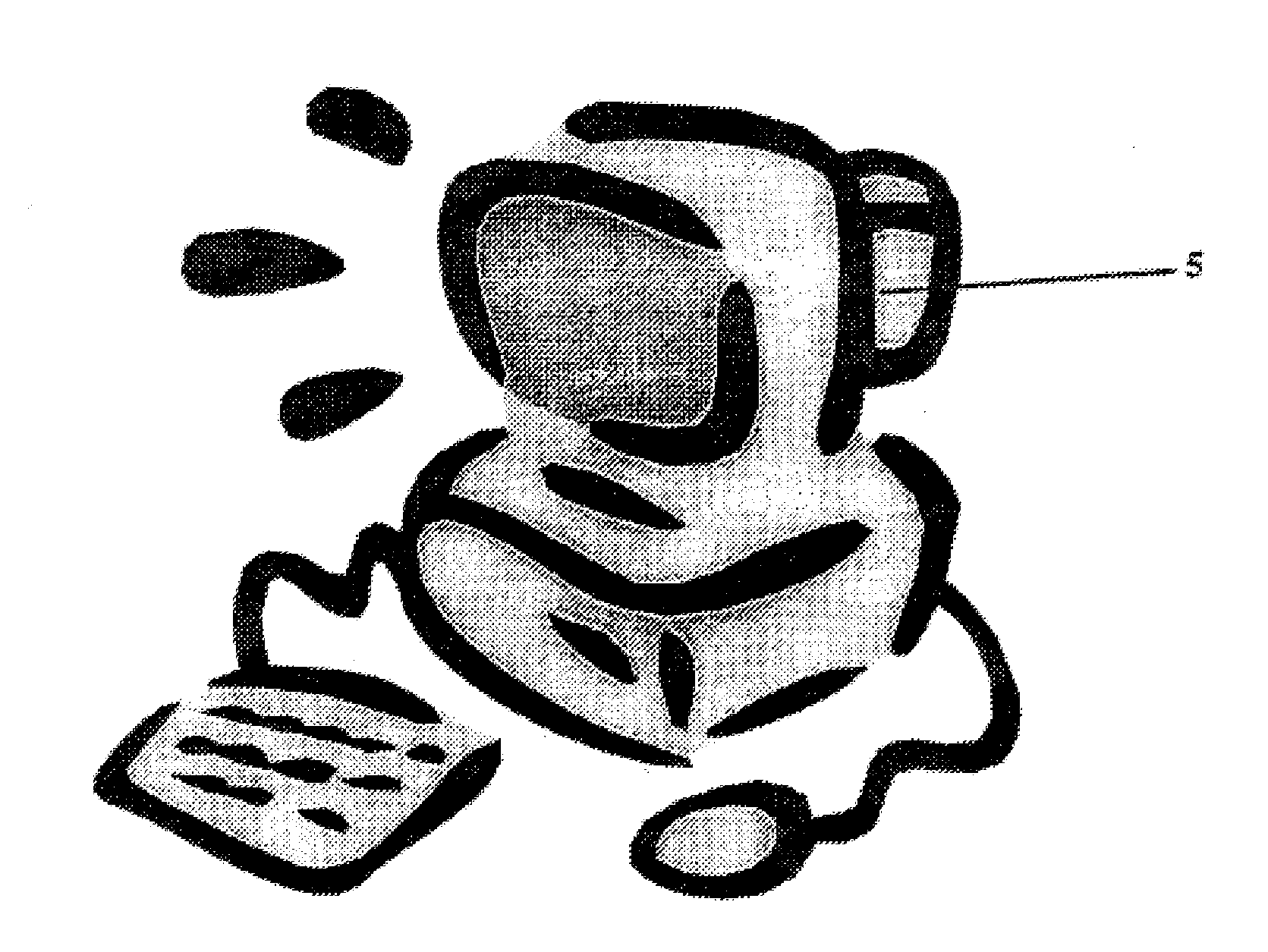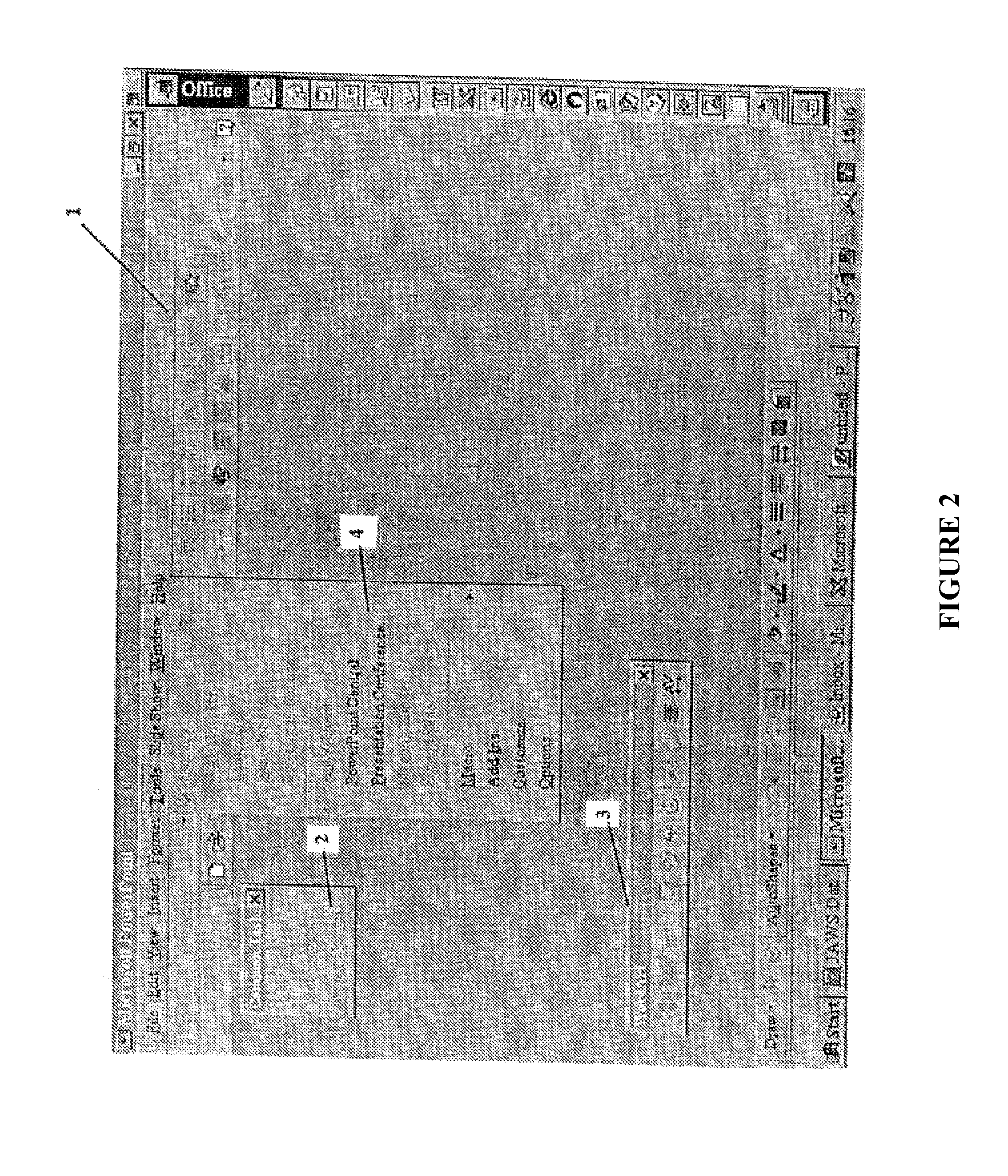Assigning screen designation codes to images
a screen designation and image technology, applied in the field of image designation, can solve the problems of limited screen area available, related problems experienced by software users, and objects at the back of the picture being obscured
- Summary
- Abstract
- Description
- Claims
- Application Information
AI Technical Summary
Benefits of technology
Problems solved by technology
Method used
Image
Examples
Embodiment Construction
[0045]With respect to FIG. 1, there is illustrated a typical screen display found in commercial software, in this case, the commercial software is Microsoft Powerpoint™.
[0046]On this display there is an external template (1), two toolbars (2, 3), a drop down menu (4) and an image to be manipulated (5) on a palette (6).
[0047]It can be seen that the toolbars (2, 3) and drop down menu (4) obscure the image (5) and palette (6).
[0048]With the present invention, the common components of the software can be placed on the foreground screen of a multi-level screen display as illustrated in FIG. 2. It should be noted that the palette (6) and the image (5) are not displayed on the foreground screen.
[0049]Instead, the image (5) is displayed on a background screen as illustrated in FIG. 3. With the present invention there is no need to display a palette.
[0050]The separation of the image (5) from the standard software components (1, 2, 3 and 4) is achieved by the present invention assigning scree...
PUM
 Login to View More
Login to View More Abstract
Description
Claims
Application Information
 Login to View More
Login to View More - R&D
- Intellectual Property
- Life Sciences
- Materials
- Tech Scout
- Unparalleled Data Quality
- Higher Quality Content
- 60% Fewer Hallucinations
Browse by: Latest US Patents, China's latest patents, Technical Efficacy Thesaurus, Application Domain, Technology Topic, Popular Technical Reports.
© 2025 PatSnap. All rights reserved.Legal|Privacy policy|Modern Slavery Act Transparency Statement|Sitemap|About US| Contact US: help@patsnap.com



